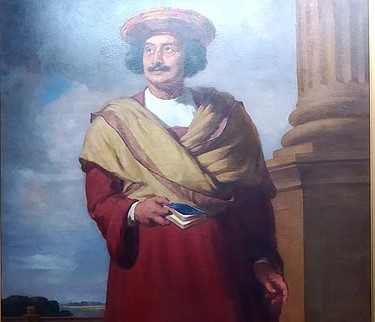
While we celebrate International Women’s Day, it is worth pondering over India's historic contribution in pioneering women's empowerment that has its beginnings in the early 19th Century.
India’s campaign for gender parity was indeed quite different from the worldwide movement for equal rights among men and women. While women globally aimed for equality in terms of wages, access to health and education, and political rights, Indian women, also had to tackle culture and social specific issues including, inheritance laws, child marriage, status of widows, and the barbaric custom of bride burning called Sati.
In fact, unlike its Western counterpart, India’s women's movement was pioneered by men, to be later joined by women.
Taking a lead in this reformation movement for gender parity were greats such as Raja Ram Mohan Roy who established the social and religious reform movement Brahmo Samaj in 1828. To prove that the “superstitious practices which deform the Hindu religion have nothing to do with the pure spirit of its dictates!”, he went to channelize his energies and that of Brahmo Samaj, against the practice of Sati, polygamy, child marriage and caste rigidity.
The Hindu custom in which a wife immolated herself at the funeral pyre of her husband was witnessed by Roy, when his brother’s wife did it in 1811. Deeply disturbed, he went to become the first Indian to protest against the practice. Historian A.L. Basham points out that Roy advocated that Sati was against the women’s right to live.
According to “Sati: Historical and Phenomenological Essays” by Arvind Sharma, ““the dreadful responsibility hanging over his head in this world and the next, if… he was to consent to the continuance of this practice (sati) one moment longer.”
Convincing people against this cruel act, he tried to enlighten them and finally prevailed upon the British to ban it. The Bengal Sati Regulation was passed in 1829 by Lord William Bentinck.
Roy’s efforts were followed by that of several other reformists.

Ishwar Chandra Vidyasagar (Pic: Courtesy Wikimedia Commons)
Widow remarriage
Ishwar Chandra Vidyasagar, a noted educator and social reformer was one of the prominent campaigner for widow remarriage. It was his persistent endeavour along with others, that saw the Hindu Widows' Remarriage Act being enacted in 1856. It legalized the remarriage of Hindu widows in regions under the East India Company rule. This legislation was the first major social reform legislation after the abolition of Sati by Lord William Bentinck.

Swami Dayanand Saraswati (Pic: Courtesy Wikimedia Commons)
Swami Dayanand Saraswati, who founded Arya Samaj in 1875 strongly advocated education for girls. In his publication Satyarth Prakash, first published in 1875, he stated that to improve the status of women by eradicating social evils, education was a must. What is remarkable is that he recommended that for marital happiness, both husband and wife should be well educated. He felt that girls should have knowledge of five subjects, namely, philosophy, grammar, music, medicine and art.
Schools for girls
Thinker, anti-caste social reformer and writer from Maharashtra, Jyotirao Govindrao Phule, called for educating girls and with his wife Savitribai Phule, pioneered women education in India. On realizing that education was the key to emancipation, he first taught his wife to read and write, and established India’s first girls’ school in 1848 in Vishrambagh Wada, Pune. By 1852, there were three schools with 273 girl students.

Jyotirao Govindrao Phule and Savitribai Phule (Pic: Courtesy Wikimedia Commons)
Woman as a leader and lawmaker
In the South, Tamil writer, poet and social reformer, Subramania Bharati took up the case for women’s emancipation and fought against child marriage. Bharati fought the cause for a new kind of Indian woman whom he saw as a leader, and lawmaker. He wanted them to be free, independent and completely empowered.
Subramania Bharati (Pic: Courtesy Wikimedia Commons)
The list of such reformers is endless. Taking a cue from these trailblazers, much remains to be accomplished before women become free of gender prejudice in all its manifestations at home and in the workplace and everything that falls in-between.




















